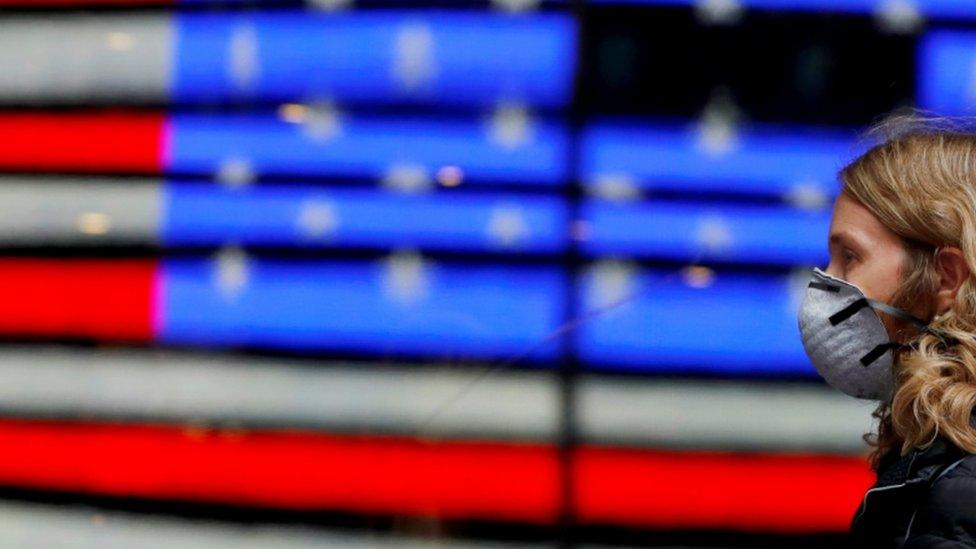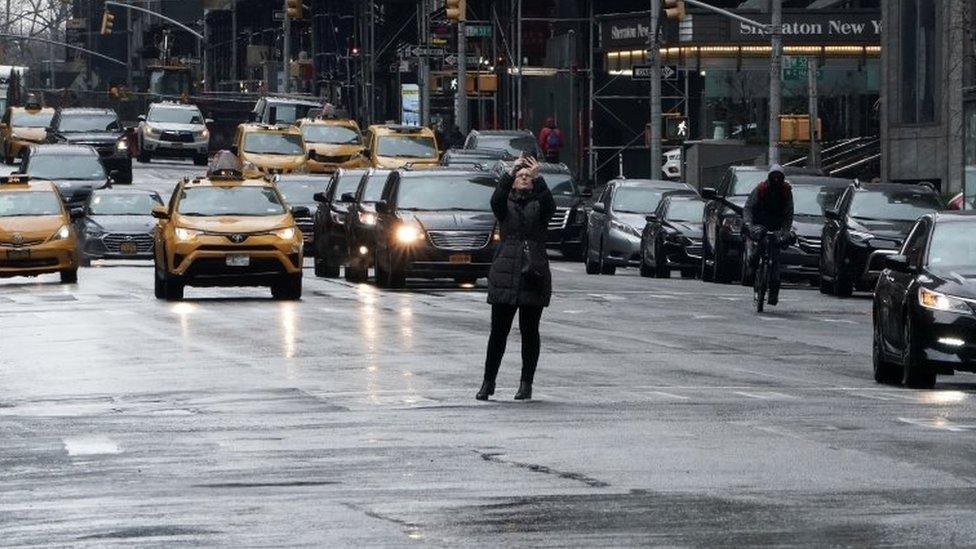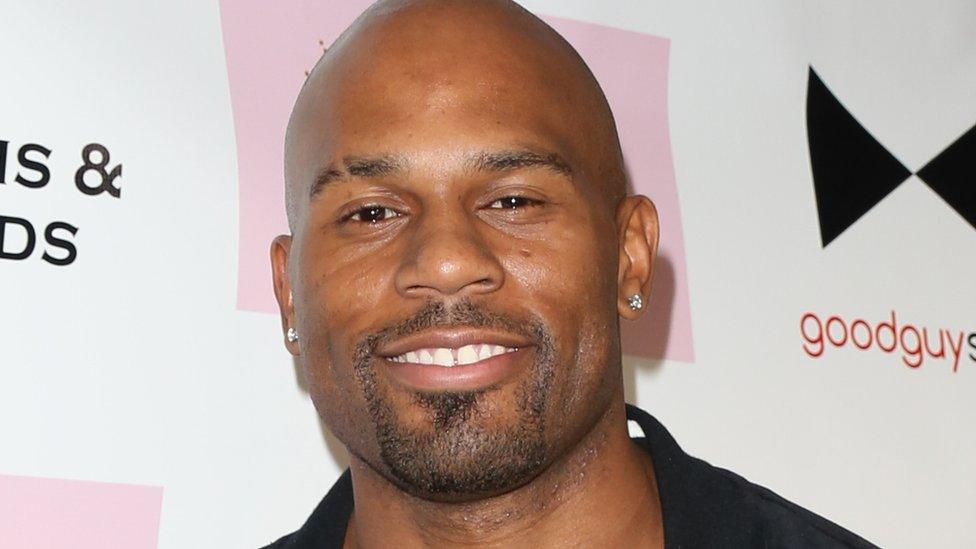Earlier coronavirus lockdown 'could have saved 36,000 lives'
- Published

A study has estimated there may have been 36,000 fewer coronavirus-related deaths had the US entered lockdown a week earlier in March.
The Columbia University research also estimated that around 83% of deaths could have been avoided if measures had been taken two weeks earlier.
It suggested that 54,000 fewer people would have died had cities begun locking down on 1 March.
President Trump dismissed the report as a "political hit job".
The study, which has not been peer reviewed yet, covers data up to 3 May, at which point there had been just over 65,300 coronavirus-related deaths in the US.
There have now been more than 93,400 coronavirus-related deaths in the United States, according to data from Johns Hopkins University.
When did the US go into lockdown?
The results of the study indicate that stricter measures imposed sooner could have made a dramatic impact.
It said the findings "underscore the importance of earlier intervention and aggressive response in controlling" the virus.
The lost six weeks when the US failed to control the virus
Mr Trump urged citizens to limit travel on 16 March, five days after the World Health Organization declared the coronavirus outbreak a global pandemic.
Individual states then began lockdown measures at different times, with California and New York state going into lockdown on 19 March and 22 March respectively, while Georgia became one of the last to implement such measures on 3 April.
Critics say the Trump administration's flawed and delayed rollout of testing meant states had limited information on the extent of the outbreak in February and early March. The president also downplayed the risk during this period.
What did President Trump say?
Asked about the research on Thursday before a visit to Michigan, Mr Trump said: "I was so early - it was earlier than anybody thought."
Although the president claimed the study was a political attack on him, the findings also raise questions for other politicians about when they enforced stay-at-home orders.
New York was the epicentre of the US outbreak and the state has had more than 28,000 deaths and 360,000 Covid-19 cases. Although New York City schools shut on 15 March, it was another week before a total lockdown was introduced.
Asked about the new research, Governor Andrew Cuomo conceded: "If this country knew more and knew it earlier we could have saved many more lives."
Why is Trump going to Michigan?
The president was touting the surplus of ventilators during a visit to a Ford plant.
With all 50 US states now reopen to some degree, Mr Trump is keen to show that America is getting back to business.
However, his trip comes as new unemployment data showed that a further 2.4m Americans sought jobless benefits last week.
The new filings brought the total number of claims since mid-March to roughly 38.6 million - roughly a quarter of the workforce.
Mr Trump has clashed with Michigan Governor Gretchen Whitmer on several occasions in the past, calling the state's lockdown measures "too tough" in April and writing "LIBERATE MICHIGAN" in a tweet alongside two other states.
Michigan is the state with the fourth-highest number of coronavirus-related deaths - more than 5,000 - according to data from Johns Hopkins University.
Did Trump wear a mask?
The president did not wear a mask when speaking with reporters during the visit, but said he donned one while in another part of the plant.
He told journalists he wore both goggles and a mask, but not in the area where there were media cameras. He said it was "not necessary" to wear one in that section of the plant.
"I was given a choice and I had one on where they had an area [where] they preferred it," he said.
He added: "I didn't want to give the press the pleasure of seeing it."
There had been questions over whether the president would wear a face mask during the visit.
A spokesperson for Ford earlier said all visitors should wear PPE, but that the White House would decide whether Mr Trump complied.
The president's refusal to commit to wear a mask before the visit drew criticism from Michigan attorney general Dana Nessel, who told CNN "we are just asking that President Trump comply with the law of our state".
She later wrote an open letter which said the president has "not only a legal responsibility, but also a social and moral responsibility, to take reasonable precautions".

A SIMPLE GUIDE: What are the symptoms?
UPLIFTING STORY: '' I got a life-changing opportunity in lockdown'
POST-COVID WORLD: Will we ever shake hands again?
GLOBAL TAKE: Which country has the most generous bailout?
THE LOST SIX WEEKS: Missed chances for US to contain outbreak

- Published21 May 2020

- Published21 May 2020

- Published20 May 2020
